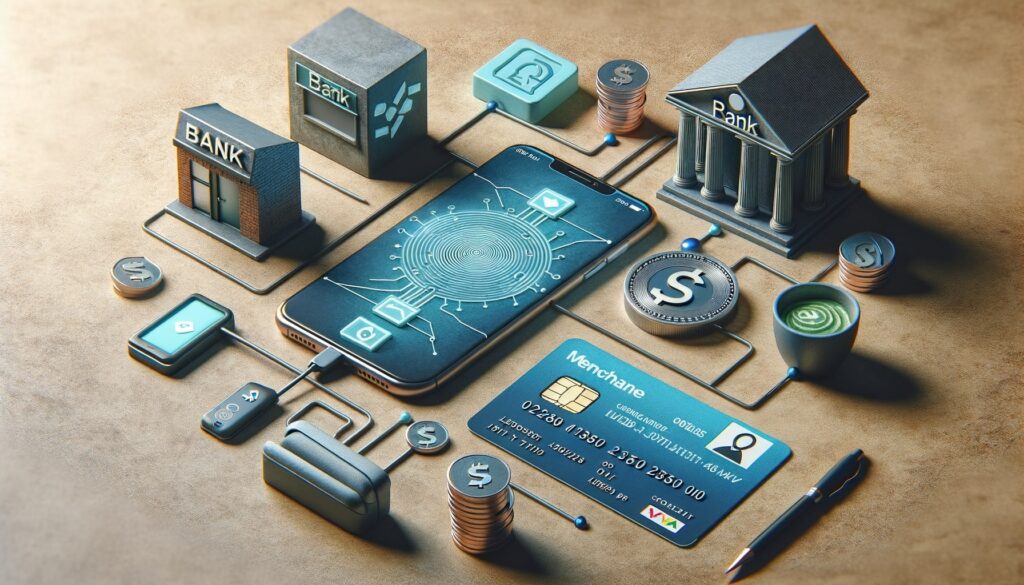Best Credit Card Processing Solutions Tailored for Every Industry

By admin November 16, 2024
In today’s digital age, accepting credit card payments over the phone has become an essential part of many businesses’ operations. Whether you run a small business or a large enterprise, providing your customers with the convenience of making payments over the phone can significantly enhance their experience and boost your sales. However, it is crucial to understand the basics of accepting credit card payments and ensure security and compliance to protect both your business and your customers’ sensitive information.
In this comprehensive guide, we will explore the various aspects of accepting credit card payments over the phone, including setting up a merchant account, choosing the right payment gateway, and best practices for efficient and effective phone payment processing.
Understanding the Basics of Accepting Credit Card Payments
Before diving into the process of accepting credit card payments over the phone, it is essential to have a clear understanding of the basics. Credit card payments involve the transfer of funds from a customer’s credit card to the merchant’s account. When a customer provides their credit card information over the phone, the merchant manually enters the details into a secure system to process the payment. This method is commonly used for businesses that do not have a physical point-of-sale terminal or for remote transactions.
Setting Up a Merchant Account for Phone Payments

To accept credit card payments over the phone, you need to set up a merchant account. A merchant account is a type of bank account that allows businesses to accept payments from credit and debit cards. It acts as an intermediary between the customer’s bank and the merchant’s bank, facilitating the transfer of funds.
To set up a merchant account, you will need to choose a payment processor or an acquiring bank that will handle the transactions on your behalf. It is crucial to research and compare different providers to find the one that offers competitive rates, reliable customer support, and robust security measures.
Choosing the Right Payment Gateway for Phone Transactions

Once you have set up a merchant account, you will need to choose a payment gateway that enables you to accept credit card payments over the phone. A payment gateway is a software application that securely authorizes and processes credit card transactions.
When selecting a payment gateway for phone transactions, consider factors such as compatibility with your merchant account, ease of integration, security features, and additional functionalities like recurring billing or tokenization. It is also essential to ensure that the payment gateway complies with industry standards and regulations, such as the Payment Card Industry Data Security Standard (PCI DSS).
Ensuring Security and Compliance in Phone Payment Processing
Security and compliance are paramount when accepting credit card payments over the phone. As a merchant, you are responsible for safeguarding your customers’ sensitive information and ensuring that it is not compromised during the payment process. To achieve this, you must adhere to the PCI DSS, which sets forth a comprehensive framework for securing cardholder data.
Some key security measures include encrypting cardholder data, implementing firewalls and intrusion detection systems, regularly updating software, and conducting vulnerability scans. It is also crucial to train your staff on best practices for handling credit card information and to regularly monitor and audit your systems for any potential vulnerabilities.
Step-by-Step Guide: Accepting Credit Card Payments Over The Phone
Now that you have a solid understanding of the basics and have set up the necessary infrastructure, let’s dive into a step-by-step guide on how to accept credit card payments over the phone.
- Inform the customer: When a customer expresses their desire to make a payment over the phone, inform them about the process and assure them of the security measures in place.
- Gather necessary information: Ask the customer for their credit card details, including the card number, expiration date, and CVV code. Ensure that you have a secure system in place to enter and store this information.
- Verify the cardholder: To prevent fraud, verify the cardholder’s identity by asking for additional information, such as their billing address or the last four digits of their social security number.
- Enter the information: Enter the customer’s credit card details into your payment gateway or virtual terminal. Double-check the information for accuracy before proceeding.
- Obtain authorization: Once the information is entered, submit the transaction for authorization. The payment gateway will communicate with the customer’s bank to verify the funds and approve or decline the transaction.
- Inform the customer of the outcome: Once you receive the authorization response, inform the customer whether the transaction was successful or declined. Provide them with a confirmation number or receipt if applicable.
- Process the payment: If the transaction is approved, process the payment by capturing the funds from the customer’s credit card. This step may vary depending on your payment gateway and merchant account setup.
- Record the transaction: Maintain a record of the transaction for future reference and reconciliation. This includes the customer’s information, transaction amount, date, and any additional notes.
- Provide customer support: Offer assistance to the customer in case they have any questions or concerns regarding the payment. Ensure that they are satisfied with the process and address any issues promptly.
- Follow up: After the payment is processed, consider sending a confirmation email or receipt to the customer for their records. This helps build trust and provides a paper trail for both parties.
Best Practices for Efficient and Effective Phone Payment Processing

To ensure smooth and efficient phone payment processing, it is essential to follow best practices that optimize the customer experience and minimize the risk of errors or fraud. Here are some key best practices to consider:
- Train your staff: Provide comprehensive training to your staff on how to handle credit card payments over the phone. This includes educating them about security protocols, customer verification techniques, and proper documentation.
- Use a secure system: Invest in a secure payment gateway or virtual terminal that encrypts customer data and complies with industry standards. Regularly update your software and implement additional security measures like two-factor authentication.
- Minimize data retention: Avoid storing sensitive customer information longer than necessary. Implement data retention policies that align with industry best practices and comply with legal requirements.
- Regularly monitor transactions: Keep a close eye on your phone payment transactions to detect any suspicious activity or potential fraud. Set up alerts for unusual patterns or high-risk transactions.
- Provide clear instructions: Clearly communicate the payment process to your customers, including what information you require and how they can securely provide it. Offer assistance and guidance throughout the process to minimize confusion or frustration.
- Offer alternative payment methods: In addition to credit card payments, consider offering alternative payment methods like digital wallets or bank transfers. This provides customers with more options and can help streamline the payment process.
- Optimize customer service: Ensure that your customer service team is readily available to assist customers with any questions or concerns related to phone payments. Promptly address any issues and strive to provide a positive experience.
- Regularly review and update policies: Stay up to date with industry trends, regulations, and security standards. Regularly review and update your policies and procedures to align with best practices and mitigate potential risks.
Common Challenges and Troubleshooting Tips for Phone Payments

While accepting credit card payments over the phone offers numerous benefits, it can also present some challenges. Here are some common challenges you may encounter and troubleshooting tips to overcome them:
- Communication issues: Poor phone reception or language barriers can hinder effective communication during the payment process. Ensure that you have a reliable phone system and consider offering multilingual support if necessary.
- Declined transactions: Sometimes, transactions may be declined due to various reasons, such as insufficient funds or suspected fraud. In such cases, politely inform the customer and offer alternative payment options or guidance on resolving the issue.
- Technical difficulties: Technical glitches or system errors can disrupt the payment process. Have a backup plan in place, such as an alternative payment method or a manual process, to handle such situations.
- Security concerns: Customers may express concerns about the security of providing their credit card information over the phone. Reassure them by explaining the security measures in place and offering alternative methods like secure online payment portals.
- Disputes and chargebacks: Occasionally, customers may dispute a phone payment or initiate a chargeback. Have a clear dispute resolution process in place and maintain detailed records of the transaction to support your case if needed.
Frequently Asked Questions (FAQs)
Q1. Is it safe to accept credit card payments over the phone?
Yes, it is safe to accept credit card payments over the phone if you follow security best practices and comply with industry standards like the PCI DSS.
Q2. What information do I need to collect from customers to process a phone payment?
To process a phone payment, you typically need the customer’s credit card number, expiration date, CVV code, and additional verification information like their billing address.
Q3. Can I store customer credit card information for future transactions?
Storing customer credit card information is subject to strict security requirements outlined in the PCI DSS. It is recommended to minimize data retention and use tokenization or encryption methods to protect sensitive data.
Q4. What should I do if a customer disputes a phone payment?
If a customer disputes a phone payment, follow your established dispute resolution process. Provide any supporting documentation and evidence to support your case.
Q5. Are there any additional fees associated with accepting credit card payments over the phone?
Some payment processors may charge additional fees for phone transactions. It is important to review the terms and conditions of your merchant account and payment gateway to understand any applicable fees.
Conclusion
Accepting credit card payments over the phone can be a valuable addition to your business’s payment options. By understanding the basics, setting up a merchant account, choosing the right payment gateway, and ensuring security and compliance, you can provide a seamless and secure payment experience for your customers.
Following the step-by-step guide and implementing best practices will help you optimize your phone payment processing and overcome common challenges. Remember to prioritize customer service and regularly review and update your policies to stay ahead in the ever-evolving world of phone payment processing.
